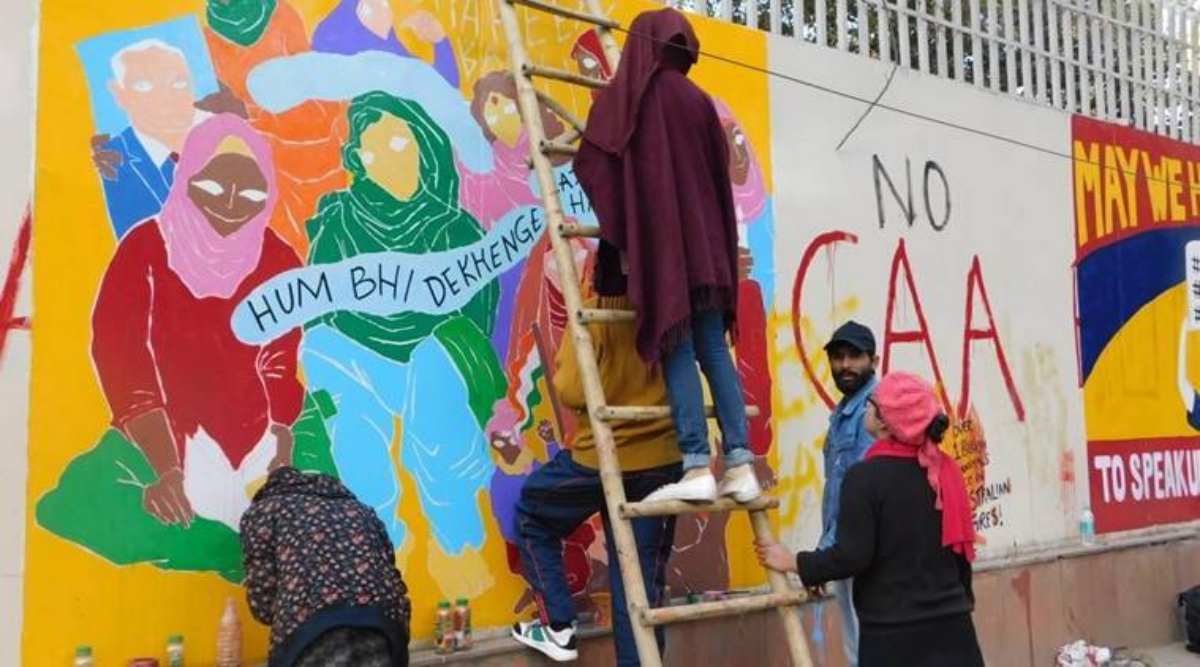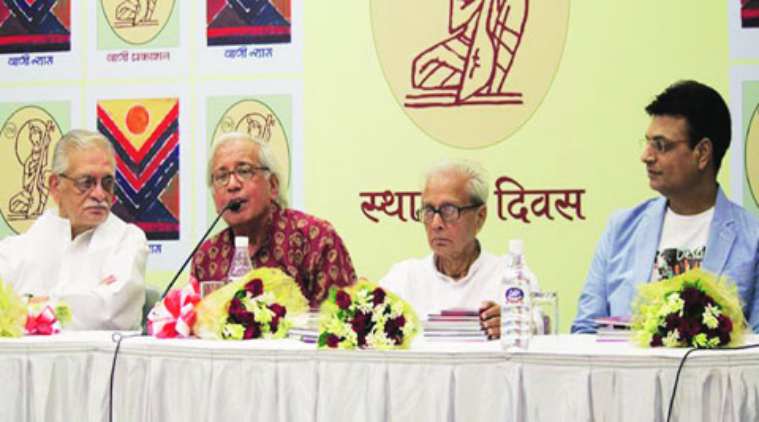
The Indian Express
India has a long history of protest poetry in Hindi, Hindustani
There runs a long history of protest poems in India. Renowned linguist Dr Ganesh Devy traces the tradition to the times of saint poets like Kabir and Mira--unspooling history from its etymology
by Ishita SenguptaShailendra had responded to the injustice meted out to people through his poem, Har zor-zulm ki takkar mein, hartaal hamara naara hai. The lines by the lyricist, one of the first poets to merge Hindi and Urdu traditions, bear testimony to weaponising language, and language being a weapon to those who have lost everything else.
During Emergency, Hindi poet Nagarjuna had famously written, kya hua aapko, kya hua aapko, satta ki masti mein bhul gayi baap ko? Titled Induji kya hua aapko, it was addressed to the then Prime Minister, Indira Gandhi.
There runs a long history of protest poems in India. Renowned linguist Dr Ganesh Devy traces the tradition to the times of saint poets like Kabir and Mira — unspooling history from its etymology. Much like the origin story of Protestantism — opposing the errors in the Catholic church — these poets, he says, “were protesting in the strictest sense of the term, that is against religious orthodoxy in the name of humanism”.
https://images.indianexpress.com/2020/08/1x1.png
As the domination shifted from religious to political, so did the protest against it. “Mass protests, different from protestant thinkers and saint poets, was a world phenomenon that emerged in the second decade of the 20th century, influenced majorly by the Russian Revolution,” he adds.
It was in the second half of the 20th century when local languages were starting to be used. “Hindi,” he says, “became the language of protest in northern parts of India as a lot of poets contributed to it. The language has a wealth of poems which are normally rebellious in nature. They are easy to remember, making them stable for reception,” he says, adding, “The starting point can be identified to when the last Mughal Badshah wrote such protest poems against British.”
Poet Ashok Vajpeyi agrees. “By and large, Hindi poetry has been anti-establishment for more than half a century. Poets as different from each other as Agyeya, Muktibodh, Nagarjuna, VDN Sahi, Raghuvir Sahay, Shrikant Verma have determined and shaped the dissident character of this poetry. It continues unabated now. A critical impulse has always been vital in this continuum.”

Fellow poet Manglesh Dabral echoes a similar opinion, adding “Regional languages have always written about protest. After Babri masjid, three-four anthologies of poems were published.” Dabral states there was a period before 1947 when Hindi poems, influenced by the Modernist style of writing by poets like TS Eliot, were devoid of political connotation. But the disenchantment with Nehruvian Dream, Emergency, demolition of the Babri Masjid infused back the political vigour.
However, protest poems are often worded in local languages, like the famous slogan Hok Kolorob during protests by students of Jadavpur University in 2014 (also borrowed from a song). The wide usage of Hindi helps in the reach. “Hindi is the most widely used language in India though other Indian languages in their domains remain dynamic, critical and dissident. The middle classes of this vast country are largely culturally impoverished and sadly illiterate. Today they are the easy constituency of bigotry, hatred, violence etc. There are moments when there is an avoidable reality check and then Hindi and other Indian languages provide a culturally resonant connection,” Vajpeyi says..
With the intervention of social media, the language has assumed a digital currency and a wider exposure. During the recent protests, a crop of younger poets extended their support through their words as well as worded rage and dissent. But what stands out in their works in their liberal use of Hindi and including Urdu words as well to make their message come across.
Hussain Haidry, poet and lyricist whose 2017 poem, I am a Hindustani Muslim, was recited and listened to at protests acknowledges this and identifies himself as a Hindustani poet. He recounts learning the tonality of protest from poets like Sahir Ludhianvi and using it to write poems in different languages. He is not the only one.
This porosity of languages, feeding off each other to speaking in an united tongue against an attempt that sought to be divisive was noticed recently more prominently than ever before. Lyricist Varun Grover’s Hum Kaagaz Nahi Dikhayenge assumed a life of its own online, so did Aamir Aziz’s unrelenting, Sab Yaad Rakha Jayega. “For me Sab Yaad Rakha Jayega is one of the most powerful poems of our times. Here was somebody who was saying the history of the hunt will be recounted by those hunted and not the hunter,” Haidry says. “I was there when violence erupted at Shaheen Bagh. I realised then that I needed to write something to dissuade people from taking up arms. What followed was these words: Hum goli nahi chalayengey, hum aawaz uthaayengey”. He says that writing the poem was his way of partaking in the protests not as a Muslim but as a citizen of the country.
Both Vajpeyi and Dabral, who returned their Sahitya Akademi Awards in 2015 to protest against the communal violence in the country, believe that the phenomenon where popular spaces are being filled with political content lends poems a binary quality threatening to obliterate its nuance. “Protest movements are created and invariably demand either/or situation and literature by its very nature is posited in undoing the binaries. The best of it demolishes the dichotomy of we and they: its moral stand is : we are them, they are us.It tries to speak truth but also doubts it,” Vajpeyi says.
But he also agrees that even though these poems might fall short in being significant for a long space of time, “they can serve a protesting moment though may not have been written with such intention.” “Poets who work in a public sphere are different from serious Hindi poets. We do not say anything to make it popular. Rahat Indori said (kisi ke baap ka Hindustan thodi hai) because he knew it would be popular and it was. But you see the popularity also ensures that more people will remember it. For instance, there is this Amitabh Bachchan song, Mere angane mein tumhara kya kaam hain. I have never heard this song but I remember it by heart,” Dabral states.
This, however, is to not deduce that only protest poems exist in Hindi. Shubham Shree, whose poem Poetry Management created uproar on social media on grounds of belittling poetry writing in 2016, maintains there exists two strands in Hindi poems–pro and anti establishment. And Hindi, like most languages, is feudal and casteist in nature. “Hindi is a language that exists in government machinery. The very ideological base of it is Brahmanical. For instance, the belt where Hindi is most spoken in the country is extremely casteist.” What gives her and many hope is not what the Hindi language is but it can be made to do: speak truth to power.
For more lifestyle news, follow us: Twitter: lifestyle_ie | Facebook: IE Lifestyle | Instagram: ie_lifestyle